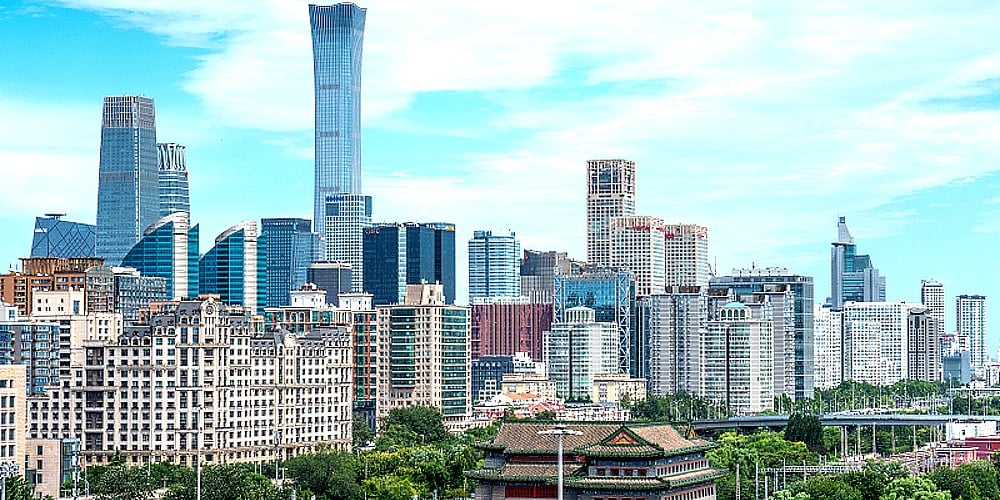Despite the Western doom-and-gloom narratives, China’s economic recovery is likely to strengthen in the second half of the year. This is due to GDP growth of 5.5 percent in the first half of the year.
The United States is on the edge of an economic recession, the eurozone is already tackling recession and Japan’s growth remains around 1 percent, but China is still growing — four times faster than these developed economies. That’s not a bad performance.
Consequently, the International Monetary Fund projects China’s share of global GDP continues to rise to 18.4 percent this year.
Why did international prognostications go wrong, once again? And has the global turmoil pushed China into recession, as some international headlines suggest?
The answer to both is “no”.
In March, China’s Government Work Report set a GDP growth target of “around 5 percent” for 2023. The projection was at the lower end of expectation.
After three years of pandemic-induced economic slowdown and half a decade of trade and technology wars, caution was warranted, especially since international headwinds are penalizing growth around the world.
According to the National Bureau of Statistics, China’s economy expanded by 6.3 percent in the second quarter compared with the same period last year, fueled by recoveries in retail sales and the service sector, and partly due to a low base effect.
The total value added of the industrial enterprises grew by 3.8 percent year-on-year in the first six months, reflecting recovery of industrial production and improved business expectations.
Importantly, strong gains marked advanced green energy-related production, including electric vehicles, solar batteries, and power generators.
So, is Chinese economy in the deflation zone? The short answer is “no.” If anything, the question indicates some international pundits appear to be in the twilight zone.
In June, the consumer price index, a main gauge of inflation, stayed flat on a yearly basis. But excluding the prices of food and energy, core consumer prices actually continued to rise moderately.
Also, fuel price disinflation, a key factor behind subdued headline inflation, is likely to wane over the coming months.
In fact, the CPI is expected to pick up in August and stay around 1 percent by the end of the year. After three years of constraints due to the COVID-19 pandemic, many consumers are not likely to stick to the old purchasing patterns.
Many people no longer buy what they want; instead, they buy what they need.
Nevertheless, retail sales of consumer goods in the second quarter increased by 8.2 percent year-on-year, up 2.4 percentage points relative to the first quarter.
Although prices have shown a downward trend over the past few months, it cannot be described as deflation, as Liu Guoqiang, vice-governor of the People’s Bank of China, said on Friday.
The economy may need about a year for the post-pandemic normalization.

But are China’s exports on the verge of decline? The answer again is “no.”
In the first six months of this year, the volume of China’s imports and exports of goods rose to $2.8 trillion, up 2.1 percent year-on-year.
According to China’s General Administration of Customs, exports increased by 3.7 percent while imports declined 0.1 percent year-on year.
The exports surplus reflects the resilience of the Chinese economy despite half a decade of misguided trade and technology wars and the after-effects of the pandemic.
As for the mild decline in imports, it should be seen in the context of China’s efforts at self-sufficiency in strategic economic sectors, as a response to the West’s protectionist policies.
The trade data show increasing regionalization and South-to-South trade.
While Asean was China’s largest trade partner, with two-way trade up 5.4 percent year-on-year, China’s trade with the European Union increased by 1.9 percent year-on-year.
More pertinently, China’s trade with Belt and Road countries and regions grew 9.8 percent year-on-year in the first half.
In contrast, China’s trade with the US contracted by 8.4 percent. As the Dallas Federal Reserve reported, to the degree that Mexico’s rise in the US trade rankings reflects Sino-US friction, the increase in US-Mexico trade “comes at a cost to US firms and consumers through higher input and purchase prices.”
And is China’s economy on the edge of recession? The clear answer is “no.”
Even though China’s economic output potential has been constrained by unwarranted external factors, the country’s economic recovery continues amid headwinds.
Additionally, fixed-asset investment grew steadily, by 3.8 percent year-on-year. In particular, State investments are now increasingly directed toward advanced manufacturing technology, semiconductors, big data centers and environmental sectors.
Besides, the real estate sector is also recovering, though slowly. In November, authorities launched a 16-point plan to revive the sector by introducing some special measures, a few of which are likely to continue till the end of 2024.
With Premier Li Qiang recently pledging to provide timely “targeted and coordinated policy support” for the economy, the PBOC has eased rates and embarked on another round of cuts in June.
There is broad expectation for a slate of accommodative measures from the high-level meeting of the Communist Party of China later this month.
And President Xi Jinping’s recent assurance that greater efforts will be made to lift the country’s opening-up to a new level could be a prelude of things to come.
All this suggests, in a benign scenario, China’s full-year GDP growth could exceed 5.0 percent year-on-year.
ADVERTISEMENT
ADVERTISEMENT








































